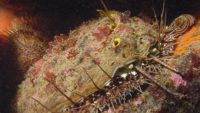By Michael Behe On this ID the Future, Michael Behe continues discussing A Mousetrap for Darwin, his newest book. Understanding of the cell has grown “by leaps and bounds” since the 1990s, when Behe’s first book appeared. Fresh discoveries have revealed ever more complex structures inside the cell. As Behe explains, it isn’t just the bacterial flagellum that’s irreducibly complex; the “hook” region inside the flagellum is, too. Evolution’s proper place of study has moved from gross anatomy and population genetics to biochemistry. In his conversation with host Eric Anderson, Behe says that intelligent design theory’s predictions are coming true [More]
By Dr. Terry Mortenson The Grand Canyon, Monument to Ancient Earth rejects the truth of Genesis regarding the Flood and the age of the earth. …read more Source: AIG Daily
What is ICR’s mission? Why are volunteers vital to our ministry? How do you prepare for creation ministry? What legacy does Dr. Henry M. Morris III leave behind as he retires from ICR leadership? Discover the answers to these questions and more in the December 2020 issue of Acts & Facts! …read more Source: icr.org
By Dr. Tommy Mitchell Your body is run by a tiny gland the size of a pea. How is this possible? …read more Source: AIG Daily
By Ken Ham Researchers have developed a method to grow “human steak” in a lab, revealing more evolution-based moral relativism. …read more Source: AIG Daily
Evolutionist scientists on Dr Swamidass’ blog try their hands at refuting Genetic Entropy! …read more Source: creation.com
A devastatingly powerful argument against evolution …read more Source: creation.com
By Ken Ham I’ve already heard predictions that Christmas shopping is going to look a lot different this year. As more people than ever shop online, shipping and processing times are expected to increase, so shoppers are being urged to shop early to make sure their packages arrive on time. Well, you can skip all those concerns—and give a gift that makes an eternal impact—by gifting those on your list a subscription to Answers TV. Here are just some of the benefits of an Answers TV subscription: It’s affordable. At only $4.99 a month—or $39.99 for a whole year (that’s [More]
Could Noah’s Ark and creatures outside the Flood survived the conditions Noah’s Flood created? …read more Source: creation.com
By John UpChurch The lowly sea snail, of all things, has a unique way of manufacturing armor from soft ingredients. …read more Source: AIG Daily
By Ken Ham Recently, I posted on my Facebook page an item written by my 14-year-old granddaughter: her take on the whole COVID–19 situation. Kylie loves writing and is very creative; someday she wants to write novels and screenplays. Well, that post went rather viral with thousands of shares, likes, and reactions. I’ve put it down below for you to read. Therefore I tell you, do not be anxious about Covid, where you will find toilet paper, whether or not schools will stay open, nor wondering if these masks really work? Is not life more than Corona? And the body [More]
By Michael Behe On this ID the Future, Eric Anderson interviews Michael Behe about Behe’s new book, A Mousetrap for Darwin. In this episode, Behe explains that he was spurred to build this collection of essays by a review in the journal Science claiming he had never answered his critics on key points. That annoyed Behe, because he had, multiple times. A Mousetrap for Darwin compiles more than a hundred of his responses, some of them from difficult-to-access places. The book also contains fresh material from Dr. Behe, including some lively behind-the-scenes details about his interactions with colleagues and critics. [More]
By Dr. Elizabeth Mitchell The observations of science continue to be consistent with the true history of life on Earth as recorded in the Word of God by the Creator of all that exists. …read more Source: AIG Daily
R?oland, an unbeliever all the way through college, was looking for answers to life’s big questions. So he looked into the philosophy of religion and of science—as well as history, which convinced him mankind was not getting better. Read More: Roland Beard: a passion for the poor – creation.com
By Brandon Clay Looking back at past Thanksgivings as we are thankful to God in 2020, a year of uncertainty. …read more Source: AIG Daily
The genome is not simple. It is a hyper-sophisticated information processing system that cannot be explained by the Darwinian descent-with-modification idea. …read more Source: creation.com
By Ken Ham What gift could you get your family, your kids, or your grandkids that will last a lifetime? A lifetime boarding pass to the Ark Encounter! With a lifetime boarding pass, enjoy free admission to both the Ark Encounter and Creation Museum for life (plus free parking, eight free Ark Encounter tickets to give away, and other perks). These boarding passes are only available for a limited time (through the end of 2020) and make a wonderful, impactful gift. It’s a wonderful gift that really builds a legacy, a legacy grounded in God‘s Word, the gospel, and …read [More]
By Ken Ham The atheistic outlook of an evolutionary worldview cannot account for gratitude, but Christians can and should be thankful this Thanksgiving. …read more Source: AIG Daily
By Howard Glicksman On this ID the Future Eric Anderson and physician Howard Glicksman further discuss a recent Journal of Anatomy article suggesting possible evolutionary changes in humans: a persistent, prominent median artery in some people’s arms. Journalists have hyped this as evolution in action, but Anderson and Glicksman say there’s little reason to treat this as an evolutionary change, even if it’s real. And they say it’s far from clear how natural selection could select for this as an “adaptation” when its most obvious effect is to contribute to carpal tunnel syndrome and other health problems. Source …read more [More]
By Ken Ham One week from today is “Giving Tuesday,” the day recognized by many as the beginning of end-of-year giving for Americans. Just a few weeks ago, we launched our end-of-year campaign with our biggest match gift ever ($3.5 million match for a goal of $7 million total)—and you have responded with generosity. We’re already nearing the $3 million mark! These funds are crucial to sustain the Answers in Genesis ministry, including the Creation Museum and Ark Encounter, through the winter months. This year, we were forced to close for three months of our busy season when we put [More]
“Giving thanks always for all things unto God and the Father in the name of our Lord Jesus Christ.” (Ephesians 5:20) Being thankful for everything that happens in his or her life to a Christian believer is listed in this section of Paul’s letter to the Ephesians as one of the evidences that a Christian is indeed “filled with the Spirit” (More… …read more Source: icr.org
Sneak peek of a powerful article from the latest Creation magazine. Amazing fossil trackways confirm deep Floodwaters …read more Source: creation.com
A reminder of creation and the Fall …read more Source: creation.com
By Howard Glicksman On this ID the Future, Eric Anderson and physician Howard Glicksman discuss a recent article in the Journal of Anatomy suggesting new microevolutionary changes in humans. Researchers say a growing number of adults have a persistent, prominent median artery in their arms, an artery that’s important in the embryonic stage but tends to disappear later on. The study was quickly hyped in the popular press with breathless headlines such as “Evolution arms us with an extra artery.” On the way to separating hype from substance, Anderson and Glicksman dive into the physiology of arteries and embryological development. [More]
If you’re a fisherman who reckons that fish are now smaller, and there are fewer of them around, you’re very likely right. …read more Source: creation.com
By Dr. Danny R. Faulkner The very inaccurate manner with which flat-earthers handle the Coriolis effect and the Foucault pendulum is typical of those in the flat-earth movement. …read more Source: AIG Daily







































